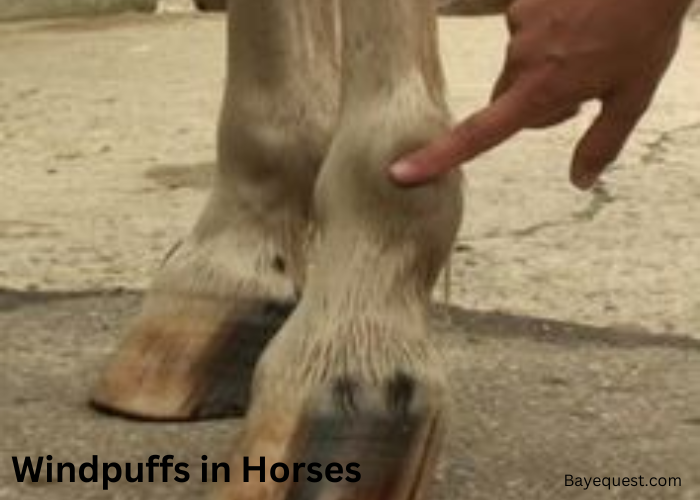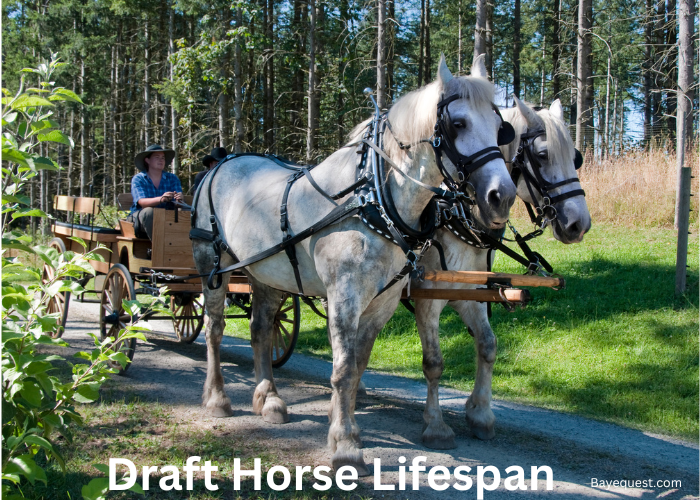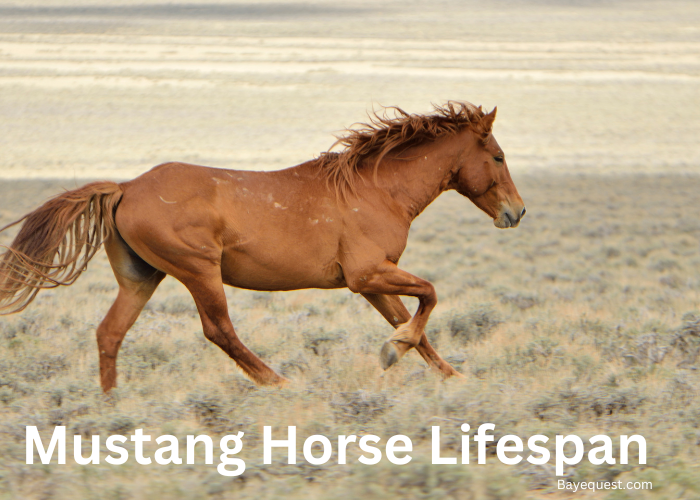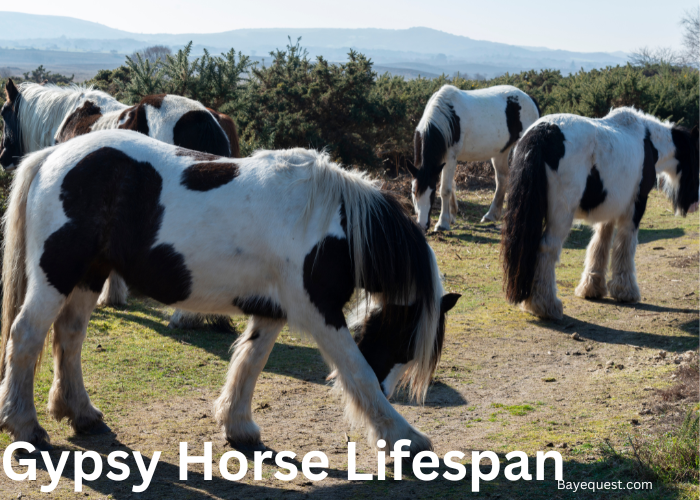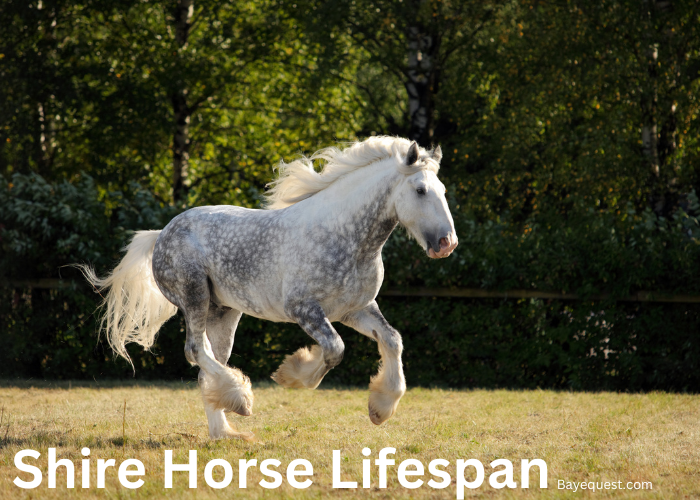Ever noticed soft puffs on your horse’s legs and wondered if they’re worth a second glance?
These little swellings, known as windpuffs, can be a clue to your horse’s health and the demands on their legs.
There’s more to them than just a cosmetic quirk. They reveal subtle signs about your horse’s routine, exercise, and overall well-being.
Curious to learn what they mean and if they need your attention? Let’s dig into the details and find out.
Windpuffs in Horses? Key Takeaway
Windpuffs in horses are soft, fluid-filled swellings that form around the fetlock joint. They occur when the synovial fluid in the joint capsule increases, often due to repetitive strain or overuse. Windpuffs are painless and do not cause lameness. They are common in horses that work hard or have poor conformation.
What are Windpuffs in Horses?
Windpuffs are soft, fluid-filled swellings that appear on a horse’s lower legs. They’re usually found around the fetlock joint, just above the hooves.
Windpuffs form in the tendon sheaths or joint capsules, which are structures that cushion and protect tendons and joints.
The swelling comes from excess synovial fluid, which lubricates these areas. This fluid buildup creates a small, spongy bulge around the fetlock.
Windpuffs are common in active horses, especially those with heavy workloads or years of wear.
They are generally painless and don’t interfere with movement.
Development of Windpuffs
Windpuffs develop due to repeated stress or strain on a horse’s legs.
Over time, activities like running, jumping, or carrying weight put pressure on the tendons and joints.
This strain causes the body to produce extra synovial fluid to help lubricate and protect these areas.
When there’s more fluid than usual, it collects in the tendon sheaths or joint capsules, leading to swelling.
Horses with intense workloads, older horses, or those with certain conformational traits are more likely to develop windpuffs.
Generally, they’re a sign of wear rather than injury, but they can sometimes indicate underlying stress on the joints or tendons.
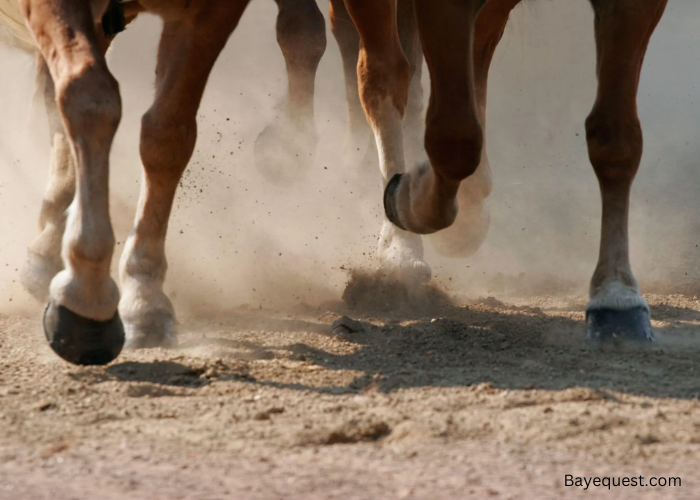
Types of Windpuffs
The main types of windpuffs in horses are:
Tendon sheath windpuffs
These are the most common type, forming in the tendon sheath around the fetlock area, especially in the digital flexor tendons.
They appear as soft, spongy swellings on the sides or back of the fetlock joint.
Articular windpuffs
These develop in the fetlock joint itself, where excess fluid collects in the joint capsule.
They tend to feel firmer than tendon sheath windpuffs and are often located at the front or sides of the fetlock.
Idiopathic windpuffs
These windpuffs have no clear cause and often appear in horses with no history of injury or heavy work.
They are usually soft, symmetrical, painless, and don’t affect performance.
Inflammatory windpuffs
Caused by irritation or inflammation in the tendons or joint capsule, often due to injury or overwork.
They may be warm or tender and can sometimes cause mild lameness.
Chronic or work-related windpuffs
Develop over time from repeated stress or a heavy workload, commonly seen in performance or older horses.
These windpuffs are often permanent but painless, typically more of a cosmetic concern.
Acute windpuffs
These appear suddenly, usually after intense activity or minor trauma.
They may be larger initially but often decrease in size with rest and care.
Characteristics/Signs and Symptoms of Windpuffs
Windpuffs have several distinct characteristics that help identify them:
1. Location
Windpuffs are most commonly found around the fetlock joint, either on the front, sides, or back of the leg. They can appear on one or both legs, often symmetrically.
2. Appearance
They are soft, spongy swellings that feel squishy to the touch.
They are round or oval in shape and vary in size, sometimes being more noticeable after exercise.
3. Painlessness
Generally, windpuffs are not painful. Horses usually don’t show signs of discomfort or lameness.
However, inflammatory windpuffs may cause mild pain, heat, or tenderness in the affected area.
4. Texture
They feel smooth and soft when palpated, with no signs of hardening or irregular lumps.
5. Mobility
The swelling is usually movable and does not feel fixed to the underlying bone or tissue.
6. Changes in size
Windpuffs may change in size depending on activity levels. They can become more prominent after exercise and may reduce after rest.
7. No heat or lameness (in most cases)
Windpuffs generally don’t cause warmth or significant lameness. If heat or lameness is present, it may indicate an underlying condition that requires veterinary attention.
8. Chronic nature
In some cases, especially with older or more active horses, windpuffs can be persistent or chronic, remaining for long periods without changing.
Read also: Symptoms of Horse Swollen Sheath.
Causes and Risk Factors of Windpuffs in Horses
Windpuffs can be caused by various factors, some related to the horse’s age, physical condition, and activity level.
Here’s a breakdown of the main causes and risk factors:
Age
As horses age, their tendons and joints undergo wear and tear.
This can lead to fluid buildup in the tendon sheaths or joints, causing windpuffs.
Older horses are more likely to develop these soft swellings because of the cumulative effects of years of movement and pressure on the legs.
Hoof imbalance
Horses with uneven hoof wear or imbalances can put extra strain on their legs, leading to increased pressure on the fetlock joint.
This imbalance can cause fluid to accumulate in the tendons or joints, resulting in windpuffs.
Correct hoof care is essential to prevent this.
Poor conformation
Horses with conformational flaws, such as long pasterns or crooked legs, may be more prone to developing windpuffs.
These structural issues can affect how weight is distributed during movement, leading to more stress on certain areas of the leg.
Repetitive loading and hyperextension
Horses that frequently perform activities involving repetitive strain, like running, jumping, or heavy exertion, are at a higher risk for developing windpuffs.
The constant loading and stretching of the tendons and joints can cause fluid buildup, especially when the fetlock joint is hyperextended.
Trauma or injury
Any trauma, such as a bump, fall, or injury to the leg, can result in inflammation or fluid buildup in the affected area, leading to the formation of windpuffs.
While windpuffs themselves are usually harmless, an injury may cause temporary swelling that resembles windpuffs.
Excessive work or exercise
Horses that engage in heavy work or intense exercise, especially without adequate rest, are more likely to develop windpuffs.
The repetitive stress and impact from hard work can cause extra fluid to accumulate around the fetlock joint.
This is common in performance or competition horses who undergo frequent, strenuous activities.
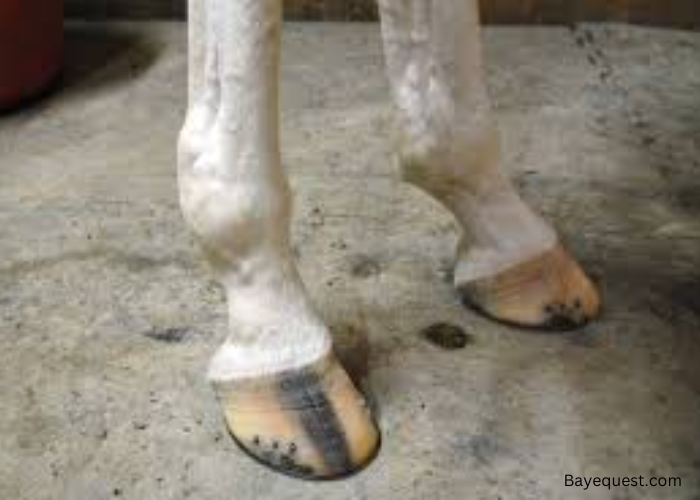
How to Diagnose Windpuffs in Horses
Here’s how a veterinarian or horse owner can diagnose windpuffs:
Visual inspection
The first step is to observe the horse’s legs, particularly the fetlock joints.
Windpuffs appear as soft, fluid-filled swellings that are usually symmetrical and located around the fetlock area.
Palpation
Gently feeling the swollen area helps determine the consistency and location of the swelling.
Windpuffs feel soft and spongy, with no heat or tenderness in most cases.
If the swelling is warm, painful, or hard, it might indicate an underlying problem rather than simple windpuffs.
Assessing the horse’s movement
Observe the horse’s movement, to look for any signs of lameness or discomfort.
Windpuffs do not affect the horse’s gait or cause limping. If the horse shows lameness or the swelling causes pain, it could suggest an injury or inflammation.
Checking for heat and tenderness
Windpuffs are not warm or tender to the touch.
If there’s heat in the area or the horse reacts with pain when touched, it could indicate inflammation or infection, not just windpuffs.
Ultrasound or X-rays
If there’s suspicion of joint or tendon issues, the veterinarian may recommend ultrasound imaging or X-rays.
These tests help to evaluate the tendons, ligaments, and joints more closely and rule out other conditions.
Joint fluid analysis (rarely needed)
If there’s a concern that the swelling may be related to infection or inflammation, a veterinarian may perform a joint fluid analysis.
This involves taking a small sample of the synovial fluid from the affected joint to check for signs of infection or other abnormalities.
How to Treat Windpuffs in Horses
Treating windpuffs in horses is straightforward since they are often harmless and don’t cause pain or discomfort.
However, depending on the underlying cause and the severity of the windpuffs, treatment options can vary.
The common treatment methods are:
Rest
Giving the horse time to rest is the first step in treating windpuffs, especially if they are related to excessive exercise or strain.
Limiting activity allows the swelling to subside and reduces the chances of further fluid buildup.
Cold therapy
Applying cold compresses or ice packs to the swollen area can help reduce any inflammation or swelling.
Cold therapy is particularly effective if the windpuff has developed after intense exercise or strain.
Supportive bandaging
Light bandaging or leg wraps may help reduce swelling and support the leg, especially in horses that are still being worked.
However, bandaging should be done correctly to avoid restricting circulation.
Non-Steroidal Anti-Inflammatory Drugs (NSAIDs)
If there’s any discomfort or signs of inflammation, a veterinarian may recommend NSAIDs, such as bute or banamine, to reduce swelling and alleviate mild pain.
Related read: How Many CC of Banamine for a Horse?
Massage
Gentle massage around the affected area can help increase circulation and reduce swelling.
This can be particularly helpful if the windpuff is related to muscle or tendon strain.
Adjusting workload
If the windpuff is a result of excessive work or exercise, reducing the intensity and frequency of training or performance can help prevent further fluid buildup.
Improving hoof care
Ensuring proper hoof balance and trimming can help reduce the stress placed on the legs.
A skilled farrier can help correct any hoof issues contributing to windpuffs.
Joint supplements
For horses with chronic windpuffs, particularly older horses, joint supplements containing glucosamine, chondroitin, or MSM may help improve joint health.
Veterinary intervention
In rare cases, if the windpuff is painful, persistent, or accompanied by other symptoms like heat or lameness, veterinary intervention may be necessary.
The vet may perform diagnostic tests like ultrasound to rule out other conditions.
Surgical treatment (rare)
In extreme cases where windpuffs cause discomfort or are associated with joint issues, surgery may be considered.
This is usually only necessary for severe, persistent cases.
What is the Prognosis of Windpuffs?
The prognosis for windpuffs in horses is usually very good. In most cases, windpuffs are harmless and don’t affect the horse’s performance.
They are often cosmetic and don’t cause pain. With rest, the swelling may go down in a few days or weeks.
Older horses might have windpuffs permanently, but they can still work fine.
If windpuffs are due to injury or inflammation, the horse can recover with treatment.
Most horses return to normal work within 2 to 6 weeks. Windpuffs rarely lead to long-term problems.
Prevention of Windpuffs
Preventing windpuffs in horses involves managing factors that contribute to their development.
Some key ways to help prevent windpuffs are:
1. Proper rest
Ensure horses get adequate rest, especially after intense exercise or heavy work. This reduces strain on the joints and tendons, helping prevent fluid buildup.
2. Regular exercise
Regular, balanced exercise helps maintain tendon and joint health, preventing excessive stress on the legs. Avoid overexertion or sudden increases in activity.
3. Maintain hoof balance
Work with a skilled farrier to ensure proper hoof care. Hoof imbalances can lead to uneven stress on the legs, contributing to windpuffs.
4. Correct conformation issues
Horses with conformation problems, such as long pasterns or crooked legs, may be more prone to windpuffs. Addressing these issues with the help of an expert can reduce risk.
5. Use supportive bandages
Use bandages or boots during strenuous work, especially in competitive horses. These can help provide extra support and reduce the risk of injury or swelling.
6. Monitor exercise intensity
Avoid overworking the horse, particularly during hot weather or after heavy activity. Gradually increase exercise levels to give the body time to adapt.
7. Proper nutrition
Provide a balanced diet with joint supplements, such as glucosamine or chondroitin, to support tendon and joint health.
8. Hydration
Ensure the horse is well-hydrated before, during, and after exercise. Proper hydration helps maintain overall health and can reduce swelling in the legs.
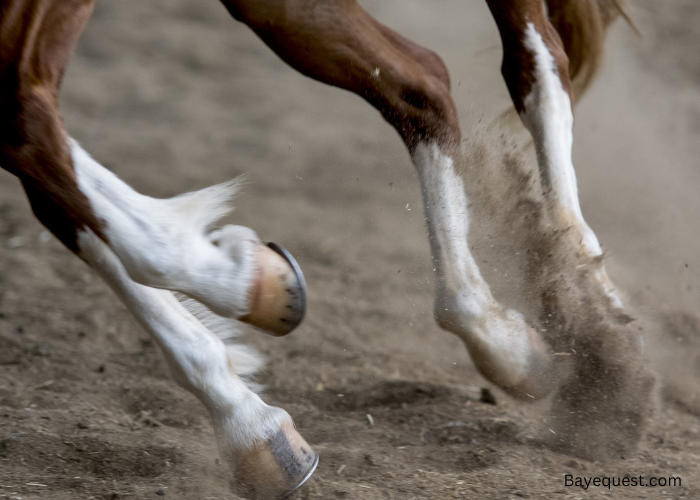
Differential Diagnosis of Windpuffs
Now, let’s explore the key conditions that might be confused with windpuffs.
1. Tenosynovitis
Tenosynovitis is the inflammation of the tendon sheath and often causes pain, heat, and lameness.
The swelling is firm and localized around the tendon, unlike the soft, fluid-filled swelling seen in windpuffs.
2. Stocking up
Stocking up happens when fluid builds up in the lower legs, usually due to prolonged standing.
The swelling is temporary and often resolves with movement, whereas windpuffs remain even after exercise. Stocking up affects both legs and is not associated with pain.
3. Proximal Annular Ligament (PAL) Desmitis
PAL desmitis is the inflammation of the ligament around the tendons in the fetlock.
It causes firm, localized swelling and pain, unlike windpuffs, which are soft and painless.
PAL desmitis also leads to lameness and stiffness, which is not typical for windpuffs.
4. Arthritis (Osteoarthritis)
Arthritis causes joint inflammation, resulting in pain, heat, and swelling, often with lameness.
The swelling is usually persistent, tender, and accompanied by heat, which distinguishes it from windpuffs.
Read also: How to Treat Arthritis in Horses.
5. Cellulitis
Cellulitis is a bacterial skin infection that causes painful, warm, and firm swelling.
Unlike windpuffs, cellulitis is associated with fever and is more serious, requiring antibiotics. Windpuffs don’t cause pain or systemic symptoms.
6. Lymphangitis
Lymphangitis is the inflammation of the lymphatic vessels, causing thick, firm, painful swelling and fever.
Windpuffs are soft, non-painful, and not associated with fever.
7. Splints
Splints are bony growths on the cannon bone, causing firm, localized swelling.
Unlike windpuffs, splints are hard and painful to the touch.
8. Joint effusion
Joint effusion is the buildup of fluid in the joint capsule, leading to painful swelling and limited movement.
Windpuffs are non-painful and don’t affect joint movement.
FAQS
Can you ride a horse with windpuffs?
Yes, you can ride a horse with windpuffs. Windpuffs are not painful and do not cause lameness, so they usually do not affect the horse’s ability to work or be ridden. However, if the windpuffs are a result of repetitive stress or overuse, ensure the horse is not overexerted.
Are windpuffs painful or harmful?
No, windpuffs are not painful or harmful. They are soft, fluid-filled swellings around the fetlock joint and do not cause lameness. Windpuffs are the result of repetitive stress or strain but are not usually a sign of serious injury.
Conclusion
Windpuffs may look concerning at first, but in most cases, they are harmless and don’t interfere with your horse’s performance.
Understanding the causes, symptoms, and treatment options helps keep your horse happy and healthy.
If the windpuffs don’t cause pain or affect movement, they’re just a sign of your horse’s hardworking legs. However, if anything changes, consult a vet.
Keep your horse in top condition, and let those windpuffs be just another part of the journey.




